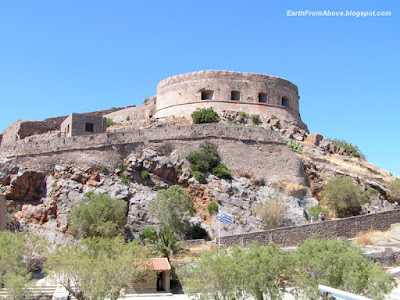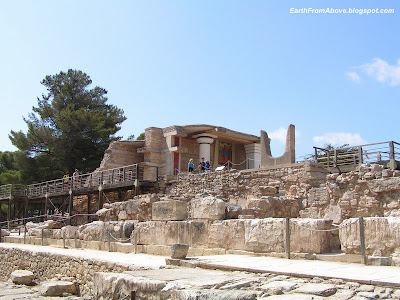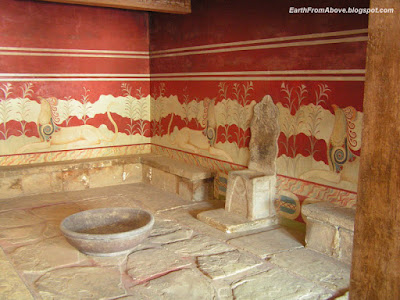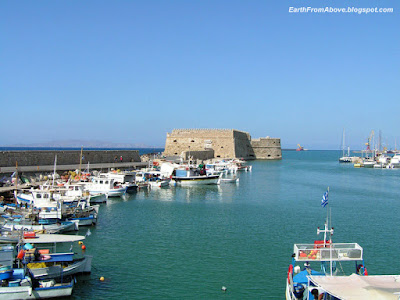Coordinates: 35° 16' 20" N, 25° 44' 55" E. Find With Google Earth.
The island of Spinalonga (official name: Kalidon) is located at the eastern section of Crete, near the town of Elounda. The name of the island, Spinalonga, is Venetian, meaning "long thorn", and has roots in the period of Venetian occupation.
The Spinalonga fortress was built by the Venetians in XVIth century. In 1579, the General Previsor of Crete Luca Michiel put the foundation stone of the fortifications. Following the Turkish occupation of Crete in 1669, only the fortresses of Gramvousa , Souda and Spinalonga remained in Venetian hands. The Venetians kept control of the island until the Ottoman Empire took possession of it in 1715.
The island was subsequently used as a leper colony, from 1903 to 1957. It is notable for being one of the last active leper colonies in Europe.
Today, the unoccupied island is one of the main tourist attractions in Crete. In addition to the abandoned leper colony and the fortress, Spinalonga is known for its small pebble beaches. The island can easily be accessed from Elounda and Agios Nikolaos. Tourist boats depart from both towns on a daily basis. Learn more...















